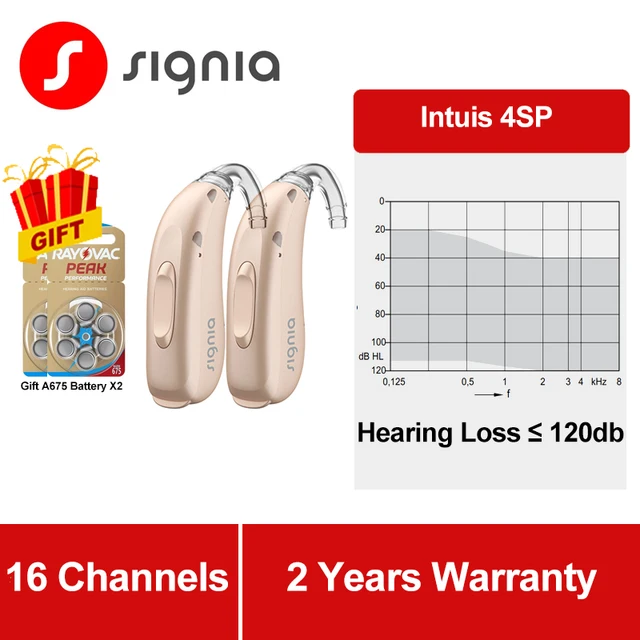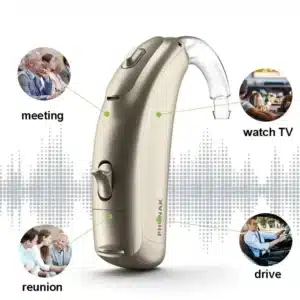Earplugs are a simple yet effective solution for reducing noise exposure. Here are some key points about earplugs:
- Types: There are various types of earplugs available, including foam, silicone, wax, and custom-molded earplugs. Each type has its own advantages in terms of comfort, effectiveness, and reusability.
- Noise Reduction Rating (NRR): Earplugs are rated based on their ability to reduce noise. The NRR is a measure, usually expressed in decibels (dB), that indicates how much noise the earplugs can block out. Higher NRR values indicate greater noise reduction.
- Uses: Earplugs are commonly used in environments where there is excessive noise, such as construction sites, factories, concerts, and during sleep to block out snoring or ambient noise.
- Proper Insertion: Correct insertion is crucial for earplugs to provide optimal noise reduction. For foam earplugs, they should be rolled into a thin cylinder, gently inserted into the ear canal, and held in place until they expand. Silicone or wax earplugs should be molded and fitted securely into the ear canal.
- Comfort and Fit: Finding earplugs that are comfortable to wear for extended periods is important. Some people may prefer softer materials, while others may prefer firmer ones. Custom-molded earplugs offer the best fit as they are individually tailored to the wearer’s ear shape.
- Hygiene: Regular cleaning and proper storage of earplugs are essential to prevent the buildup of dirt, wax, and bacteria. Disposable earplugs should be replaced after each use, while reusable earplugs should be cleaned according to the manufacturer’s instructions.
- Safety: While ear plugs are effective in reducing noise, it’s important not to completely block out all environmental sounds, especially in situations where awareness of one’s surroundings is necessary for safety.
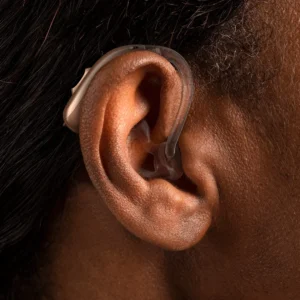
Overall, earplugs are a convenient and affordable option for protecting your hearing in noisy environments. However, it’s essential to choose the right type of earplugs and use them correctly to ensure maximum effectiveness and comfort.
Do noise reduction ear plugs work?
Yes, noise reduction ear plugs can be very effective, but their performance depends on several factors:
Effectiveness Factors:
- Noise Reduction Rating (NRR): The NRR is a measure of how well earplugs reduce noise. Higher NRR values generally mean better noise reduction. For example, earplugs with an NRR of 30 can reduce noise by up to 30 decibels.
- Fit: Proper fit is crucial for effective noise reduction. Earplugs need to form a good seal in your ear canal to block out sound effectively. Ill-fitting earplugs can let noise in around the edges.
- Material: Different materials provide different levels of noise reduction and comfort. Foam earplugs generally offer high noise reduction but might be less comfortable for long-term use. Silicone and custom-molded earplugs can be more comfortable but may provide slightly less noise reduction.
- Application: The effectiveness also depends on what you’re using them for. For instance:
- Sleeping: High NRR earplugs are beneficial for blocking out ambient noise.
- Concerts: High-fidelity earplugs reduce the volume while preserving sound quality.
- Industrial Work: Earplugs designed for high noise environments can protect against hearing damage.
Usage Tips:
- Insertion: Make sure to insert earplugs correctly. For foam earplugs, roll them between your fingers, insert them into your ear canal, and hold them in place until they expand. For silicone or custom-molded earplugs, follow the manufacturer’s instructions for a proper fit.
- Maintenance: Keep earplugs clean and replace them as needed. Some types of earplugs, like foam ones, are designed for single use, while others, like silicone or custom-molded earplugs, can be reused.
- Comfort: If earplugs are uncomfortable, it might affect their effectiveness. Experiment with different types to find the best fit and comfort level for your needs.
What are the Best Ear Plugs for Noise Reduction?
Best noise reduction ear plugs:- When it comes to choosing the best noise reduction ear plugs, it depends on your specific needs and preferences. Here are some top-rated options for different purposes:
For General Noise Reduction:
- Mack’s Ultra Soft Foam Earplugs: Known for their comfort and excellent noise reduction, these earplugs are often recommended for sleeping and general noise reduction.
- Howard Leight by Honeywell Laser Lite Earplugs: These have a high noise reduction rating (NRR) and are designed for industrial environments, but they also work well for blocking out general noise.
- Etymotic Research ER20XS High-Fidelity Earplugs: These are designed to reduce volume without distorting sound, making them great for musicians and concert-goers.
For Sleep:
- Howard Leight Max-1 Foam Earplugs: With a high NRR and a comfortable fit, these are a popular choice for people who need to block out noise while sleeping.
- Mack’s Pillow Soft Silicone Earplugs: These are made from a moldable silicone that provides a snug fit and excellent noise isolation, making them great for sleeping.
For Music or Concerts:
- Etymotic Research ER20XS: These high-fidelity earplugs are designed to protect your ears from loud music while preserving sound quality.
- Alpine MusicSafe Pro Earplugs: These earplugs come with different filter types to adjust for various noise levels, making them suitable for musicians and concert-goers.
For Shooting or Industrial Use:
- 3M Peltor Sport Tactical 100 Electronic Hearing Protector: While not a traditional earplug, this electronic earmuff provides superior noise protection with adjustable settings for different environments.
- Radians Custom Molded Earplugs: These provide a high level of noise reduction and can be molded to fit the shape of your ear for a custom fit.
Tips for Choosing:
- Noise Reduction Rating (NRR): Higher NRR values mean better noise reduction.
- Comfort: Look for earplugs made from soft materials if you need to wear them for extended periods.
- Fit: For the best noise reduction, ensure a proper fit. Foam earplugs generally offer a better seal, while silicone or custom-molded options might be more comfortable for prolonged use.
It’s worth trying a few different types to see what works best for you, as comfort and effectiveness can vary from person to person.
The cost of noise reduction ear plugs can vary depending on several factors, including the type of ear plug, the brand, the level of noise reduction, and whether they are disposable or reusable. Here’s a general overview of the cost range:
1. **Foam Earplugs**: Disposable foam earplugs are often the most affordable option and typically come in bulk packages. They can range from a few cents per pair for basic foam earplugs to a few dollars for higher-quality foam ear plugs with higher noise reduction ratings.
2. **Silicone Earplugs**: Silicone ear plugs are usually more expensive than foam ear plugs but are reusable, making them a cost-effective option in the long run. Prices can range from a few dollars to around $20 or more for a pair, depending on the brand and features.
3. **Wax Earplugs**: Wax earplugs are often in the mid-range in terms of cost. They are typically sold in packs and may cost anywhere from a few dollars to around $15 for a pack of multiple pairs.
4. **Custom Molded Earplugs**: Custom-molded earplugs are the most expensive option but offer the best fit and highest level of noise reduction. Prices for custom-molded earplugs can range from around $50 to $200 or more, depending on the provider and additional features.
5. **Electronic Noise Reduction Ear plugs**: Electronic noise reduction ear plugs are the most expensive option due to their advanced technology. Prices can range from around $100 to $500 or more for a pair, depending on the brand and features such as Bluetooth connectivity or custom programming.
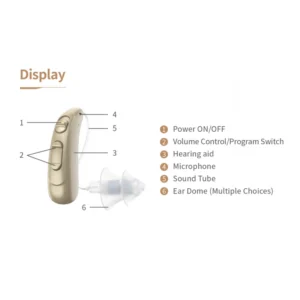
It’s essential to consider factors such as comfort, durability, and effectiveness when choosing noise reduction ear plugs, rather than solely focusing on cost. Investing in a higher-quality pair of earplugs that provide adequate protection and comfort can ultimately be more beneficial in the long term, especially if you frequently expose yourself to loud environments.
Noise reduction ear plugs for concerts:
For concerts, where you want to protect your hearing while still enjoying the music, high-fidelity earplugs are the best choice. These earplugs reduce the overall volume without distorting sound quality, allowing you to experience the music more comfortably. Here are some top options:
High-Fidelity Earplugs for Concerts:
- Etymotic Research ER20XS High-Fidelity Earplugs
- Features: Designed specifically for music lovers, these earplugs offer a balanced sound while reducing volume. They come with different sizes of ear tips for a customizable fit.
- NRR: Around 20 dB.
- Pros: Maintain sound clarity, comfortable, durable.
- Alpine MusicSafe Pro Earplugs
- Features: These earplugs come with three different filter sets (for musicians, DJs, and concert-goers) to suit various environments. They are designed to preserve sound quality while protecting your ears.
- NRR: Around 19-25 dB depending on the filter used.
- Pros: Customizable filters, comfortable, reusable.
- Vibes Hi-Fidelity Earplugs
- Features: These earplugs are designed to reduce noise evenly across frequencies, which helps to preserve the natural sound of music. They come with a case for easy carrying.
- NRR: Around 22 dB.
- Pros: Sleek design, comfortable, good sound clarity.
- EarPeace HD Concert Earplugs
- Features: These earplugs are designed to provide a flat reduction of noise, making them ideal for concerts where you want to protect your hearing while still enjoying the music. They come with multiple filter options.
- NRR: Around 20-26 dB depending on the filter.
- Pros: Reusable, different filter levels, comfortable fit.
Choosing the Right Earplugs:
- Fit and Comfort: Ensure the earplugs fit well and are comfortable for long periods. Custom or moldable earplugs might offer the best fit.
- Sound Quality: Look for earplugs specifically designed for music, as they reduce volume without distorting sound. High-fidelity earplugs maintain the quality of the music while protecting your ears.
- Portability: Consider earplugs that come with a carrying case for convenience.
High-fidelity earplugs are an excellent investment for anyone who regularly attends concerts or live music events, helping to prevent hearing damage while still allowing you to enjoy the performance.
Noise reduction ear plugs for autism
For individuals with autism who may be sensitive to noise, finding the right earplugs can help manage sensory overload and create a more comfortable environment. Here are some considerations and recommendations for noise reduction ear plugs that may be beneficial:
Earplugs for Autism:
- Mack’s Silent Earplugs
- Features: Made from soft foam, these earplugs offer high noise reduction and are comfortable for extended wear. They are designed to reduce noise across a broad spectrum.
- NRR: Around 32 dB.
- Pros: High noise reduction, soft and comfortable, inexpensive.
- Howard Leight by Honeywell Max-1 Foam Earplugs
- Features: Known for their excellent noise reduction and comfort, these earplugs are ideal for reducing environmental noise. They are made of foam that conforms to the shape of the ear canal.
- NRR: Around 33 dB.
- Pros: Very high noise reduction, comfortable, suitable for long-term use.
- Alpine SleepSoft Earplugs
- Features: These earplugs are designed specifically for people who need to block out noise while sleeping but can also be useful for sensory sensitivity. They have a soft, comfortable design and are less noticeable.
- NRR: Around 20 dB.
- Pros: Comfortable for prolonged wear, good for sleeping and reducing general noise.
- Etymotic Research ER20XS High-Fidelity Earplugs
- Features: While designed to reduce overall volume while preserving sound quality, these earplugs may be useful for those who are sensitive to loud noises but still need to maintain some level of sound awareness.
- NRR: Around 20 dB.
- Pros: Preserves sound clarity, good for environments where some background noise is acceptable.
- Loop Experience Earplugs
- Features: These earplugs provide a modern, discreet design with a high-fidelity filter that reduces noise while preserving sound quality. They are comfortable and come with a stylish case.
- NRR: Around 20-25 dB.
- Pros: Discreet, stylish, comfortable, good for managing sensory sensitivities in public settings.
Additional Considerations:
- Comfort: Comfort is crucial for long-term wear. Soft, foam, or silicone earplugs often provide the best comfort. Custom-molded earplugs, though more expensive, can offer an optimal fit and are highly comfortable.
- Noise Reduction Level: The required noise reduction level can vary. Some people may need high NRR earplugs (above 30 dB), while others might find a lower NRR sufficient for their needs.
- Ease of Use: Earplugs should be easy to insert and remove. For those with sensory sensitivities, it might be important that the earplugs are easy to handle and not too intrusive.
- Durability and Cleanliness: Reusable earplugs should be easy to clean, while disposable ones need to be replaced regularly.
Finding the right earplugs may require some experimentation to determine what provides the best balance of noise reduction and comfort.
Noise reduction ear plugs for work
Ear plugs with highest noise reduction:- When selecting noise reduction earplugs for work, especially in environments where high noise levels are common, it’s important to choose earplugs that offer effective noise attenuation while being comfortable for long-term use. Here are some top recommendations based on different needs and work environments:
Top Noise Reduction Earplugs for Work:
- Howard Leight by Honeywell Max-1 Foam Earplugs
- Features: These type of noise reduction ear plugs are well-known for their excellent noise reduction and comfortable fit. Made from soft foam, they conform to the shape of your ear canal.
- NRR: 33 dB.
- Pros: Very high noise reduction, soft and comfortable, ideal for noisy work environments.
- Mack’s Ultra Soft Foam Earplugs
- Features: These type noise reduction ear plugs provide a high level of noise reduction and are made from a soft, pliable foam that offers a snug, comfortable fit.
- NRR: 32 dB.
- Pros: High noise reduction, very soft and comfortable, suitable for prolonged wear.
- 3M E-A-R Classic Earplugs
- Features: Known for their effective noise reduction and distinctive cylindrical shape, these earplugs are made from slow-recovery foam.
- NRR: 29 dB.
- Pros: Effective noise reduction, easy to insert and remove, durable.
- Radians Custom Molded Earplugs
- Features: These earplugs can be molded to fit the unique shape of your ear, providing a custom fit and high noise reduction. They come with a moldable silicone material.
- NRR: 26-29 dB.
- Pros: Customizable fit, comfortable, reusable.
- 3M Peltor Optime 105 Earmuffs
- Features: While not a traditional earplug, these earmuffs provide excellent noise reduction and are suitable for very noisy environments. They can be worn in conjunction with earplugs for extra protection.
- NRR: 30 dB.
- Pros: High noise reduction, comfortable, good for very loud environments.
- EarPeace HD Earplugs
- Features: Designed to offer high fidelity sound while reducing overall noise levels, these earplugs are ideal if you need to communicate or hear alarms while protecting your hearing.
- NRR: 20-26 dB depending on the filter used.
- Pros: Provides clear sound reduction, comfortable, includes multiple filter options.
Key Considerations for Work Earplugs:
- Noise Reduction Rating (NRR): Higher NRR values indicate better noise reduction. Choose earplugs with an NRR that suits your work environment. For extremely noisy conditions, look for NRRs above 30 dB.
- Comfort and Fit: Earplugs should be comfortable to wear for long periods. Foam earplugs are generally soft and comfortable, while silicone or custom-molded options offer a more tailored fit.
- Durability: If you need earplugs for daily use, consider options that are durable and can be cleaned easily. Disposable earplugs are convenient but need to be replaced regularly.
- Ease of Use: Earplugs should be easy to insert and remove. For those who wear them frequently, comfort and ease of handling are essential.
- Work Environment: Consider whether your work environment requires additional features, such as high-fidelity earplugs for hearing protection without completely isolating you from important sounds or communications.
Choosing the right earplugs can help protect your hearing and ensure a more comfortable work experience. If you’re unsure which type to choose, experimenting with a few different options can be beneficial.
What is a good noise reduction rating for earplugs?
Ear plug noise reduction rating:- A good Noise Reduction Rating (NRR) for noise reduction ear plugs depends on your specific needs and the noise levels in your environment. Here’s a general guide to help you understand what NRR might be appropriate for different situations:
General Guidelines for NRR:
- Low Noise Environments:
- NRR 20-25 dB: Suitable for moderate noise levels such as background noise in offices or light industrial settings. This range provides sufficient reduction for comfort without overly isolating you from important sounds.
- Moderate to High Noise Environments:
- NRR 25-30 dB: Ideal for environments with louder noise levels, such as construction sites or heavy manufacturing. This level of noise reduction helps protect your hearing while still allowing you to communicate if necessary.
- Very High Noise Environments:
- NRR 30+ dB: Necessary for extremely loud environments like airports, shooting ranges, or certain industrial workplaces. Earplugs with an NRR in this range offer the highest level of protection.
Choosing the Right NRR:
- For General Use: If you are in a setting with moderate noise, such as at a concert or in a busy office, earplugs with an NRR of 20-25 dB are typically sufficient.
- For Loud Work Environments: If you work in a noisy industrial environment or are exposed to loud machinery, you might need earplugs with an NRR of 25-30 dB or higher to ensure adequate protection.
- For Extremely Loud Situations: In settings with very high noise levels, such as in some manufacturing plants or during shooting, earplugs with an NRR of 30 dB or more are recommended. In some cases, combining earplugs with earmuffs can provide additional protection.
Additional Considerations:
- Fit and Comfort: The effectiveness of earplugs is highly dependent on a proper fit. Ensure the earplugs are inserted correctly and form a good seal in the ear canal to achieve the rated NRR.
- Type of Earplugs: Different types of earplugs (foam, silicone, custom-molded) can provide varying levels of comfort and noise reduction. Choose based on your specific needs and how long you plan to wear them.
- Environment and Use: Consider if you need earplugs for prolonged use, occasional exposure, or for specific activities like sleeping or attending concerts.
Selecting earplugs with the appropriate NRR for your environment helps protect your hearing while maintaining comfort and functionality.
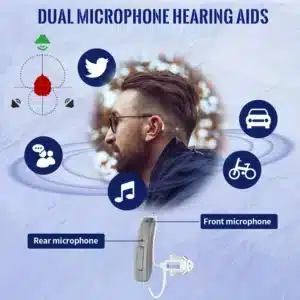
What does 27 dB noise reduction mean?
An NRR (Noise Reduction Rating) of 27 dB means that the earplugs are designed to reduce the level of noise entering the ear by approximately 27 decibels. This rating indicates how much the earplugs can lower the intensity of sound, making it quieter for the wearer.
Understanding NRR of 27 dB:
- How It Works:
- Decibel Reduction: If you’re in an environment where the noise level is 100 dB (which is quite loud), wearing earplugs with an NRR of 27 dB would reduce the effective noise level to around 73 dB. This is calculated by subtracting the NRR from the ambient noise level (100 dB – 27 dB = 73 dB).
- Effectiveness:
- Moderate to High Noise Environments: An NRR of 27 dB is suitable for environments with moderate to high noise levels. It provides significant noise reduction and is often adequate for industrial settings, loud concerts, or other noisy activities.
- Comfort and Fit:
- Proper Use: For the NRR to be effective, the earplugs must be inserted properly and fit well. An improper fit can reduce the effectiveness of the noise reduction.
- Comparison:
- Higher vs. Lower NRR: Earplugs with a higher NRR (30 dB or more) offer more noise reduction, which might be necessary for extremely loud environments. Lower NRR earplugs (20-25 dB) might be sufficient for less noisy settings.
- Real-World Application:
- Workplace: In a noisy industrial environment, an NRR of 27 dB can help protect your hearing from prolonged exposure to loud sounds.
- Concerts: For concerts or other loud events, earplugs with an NRR of 27 dB can reduce the risk of hearing damage while still allowing you to enjoy the music.
In summary, an NRR of 27 dB means that the earplugs can effectively reduce the noise level by 27 decibels, providing a significant reduction in sound intensity and helping to protect your hearing in noisy environments.
Overall, when used correctly, noise reduction ear plugs can be highly effective in reducing noise and protecting your hearing.
